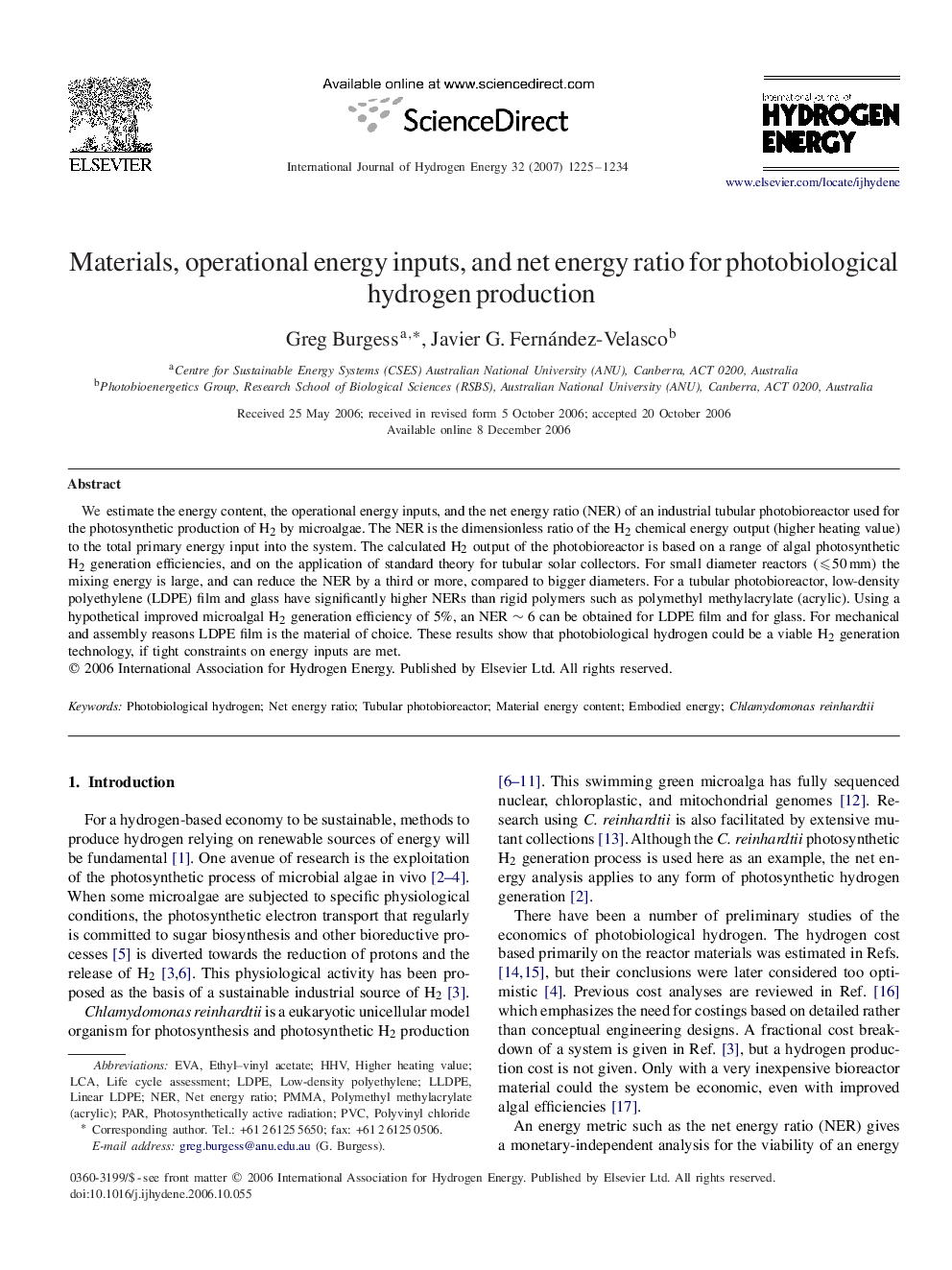| Article ID | Journal | Published Year | Pages | File Type |
|---|---|---|---|---|
| 1275157 | International Journal of Hydrogen Energy | 2007 | 10 Pages |
We estimate the energy content, the operational energy inputs, and the net energy ratio (NER) of an industrial tubular photobioreactor used for the photosynthetic production of H2H2 by microalgae. The NER is the dimensionless ratio of the H2H2 chemical energy output (higher heating value) to the total primary energy input into the system. The calculated H2H2 output of the photobioreactor is based on a range of algal photosynthetic H2H2 generation efficiencies, and on the application of standard theory for tubular solar collectors. For small diameter reactors (⩽50mm) the mixing energy is large, and can reduce the NER by a third or more, compared to bigger diameters. For a tubular photobioreactor, low-density polyethylene (LDPE) film and glass have significantly higher NERs than rigid polymers such as polymethyl methylacrylate (acrylic). Using a hypothetical improved microalgal H2H2 generation efficiency of 5%, an NER ∼6∼6 can be obtained for LDPE film and for glass. For mechanical and assembly reasons LDPE film is the material of choice. These results show that photobiological hydrogen could be a viable H2H2 generation technology, if tight constraints on energy inputs are met.
